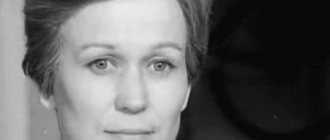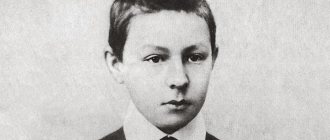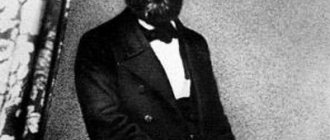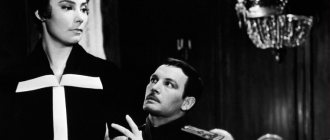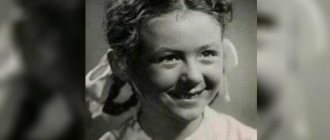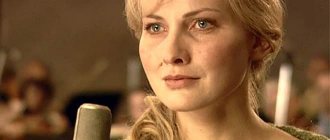“I played my tiny role with style”
Maya Plisetskaya with her father Mikhail Plisetsky and mother Rachel Messerer. 1927. Moscow. Photo: pda.litres.ru
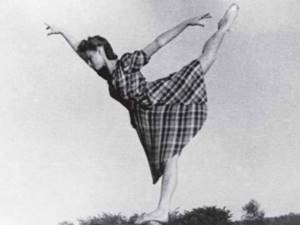
Maya Plisetskaya in her youth. Photo: 24smi.org
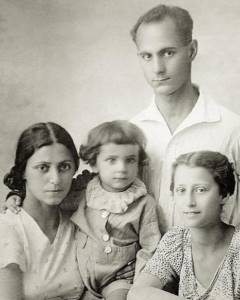
Maya Plisetskaya (far right) with her mother Rachel Messerer, brother Azariy and uncle Aminadav Messerer. 1938. Photo: womanhit.ru
Maya Plisetskaya was born on November 20, 1925 in Moscow. Her father Mikhail Plisetsky worked as a diplomat at the Commissariat of Foreign Affairs and Foreign Trade, and her mother Rachel Messerer played in silent films. Mother's sister and brother, Shulamith and Asaf Messerer, were ballet dancers. Already at the age of five, little Plisetskaya was brought to the theater for the first time.
In 1932, Mikhail Plisetsky was sent to the Norwegian island of Spitsbergen. He was appointed Consul General of the USSR and head of the coal mines of the Arktikugol enterprise. The family settled in Barentsburg, and here Maya Plisetskaya took part in a ballet production for the first time - she played a small role in Alexander Dargomyzhsky’s opera “Rusalka”.
I was cast in the role of the Little Mermaid, who uttered Pushkin’s famous text “I don’t know what money is.” Either it was out of our terry Soviet sycophancy - my father was, after all, a consul - or I really was artistic. I will say immodestly, it was. If they were fawning, they didn’t miss. I played my tiny role with style. This was my first performance on the stage in front of an audience.
Maya Plisetskaya, “I, Maya Plisetskaya”
In 1934, the father was given a short-term leave, and the family came to Moscow. Maya Plisetskaya, as she dreamed, was sent to the Moscow Choreographic School (today the Moscow State Academy of Choreography). The young artist was assigned to the class of Bolshoi Theater soloist Evgenia Dolinskaya. She regularly staged dance miniatures for her students, in which Plisetskaya also participated.
Dolinskaya's studies had to be interrupted when her father had to return to Spitsbergen. In the spring of 1935, the family came to Moscow again, and Plisetskaya went to the second grade of the choreographic school. Her group was now taught by former Mariinsky Theater soloist Elizaveta Gerdt, who became the aspiring ballerina’s mentor for the next six years.
The year 1937 changed the Plisetskys’ usual life. In May, my father was arrested, and seven months later he was shot. In March 1938, the mother was taken straight from the play “The Sleeping Beauty” at the Bolshoi Theater, where her younger sister was playing. After the arrest of Shulamith's relatives, Messerer adopted her niece.
I didn’t understand that my mother was in prison. That she was also arrested. Also at the most unexpected, inopportune hour. Have people already figured out the right time for arrests?
Maya Plisetskaya, “I, Maya Plisetskaya”
Childhood and youth
Maya Plisetskaya was destined to become a famous and popularly adored artist. She was born on November 20, 1925 in a Moscow family. And although her father, Mikhail Emmanuilovich Plisetsky , was not associated with art, holding responsible government positions, her mother, Rachel Messerer, was a silent film actress. Creative genes on the maternal side from Aunt Shulamith and Uncle Asaph , ballet stars, Aunt Elizabeth, a theater actress, predicted a grandiose future for Maya in art.
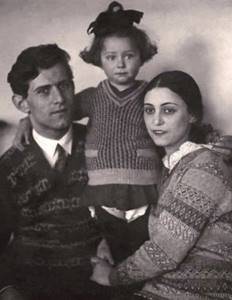
With dad and mom in childhood
In Spitsbergen , where the family moved in 1932, the future ballet star made her debut on stage, dancing in the opera The Little Mermaid . Upon returning to Moscow, Maya, who had a dream of a dance career, was assigned to a choreography school. But the terrible year 1937 struck: the father of the family was declared an enemy of the Motherland and liquidated without trial or investigation. The mother and little brother were exiled to Kazakhstan straight from the concert hall. 12-year-old Maya was threatened with an orphanage, but Aunt Shulamith took responsibility for the girl.
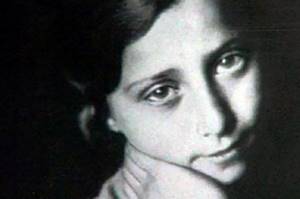
In youth
All her life, Maya remembered with gratitude her aunt’s efforts in overcoming depression and becoming a professional ballerina. With the help of a caring woman, Maya found strength in herself, learned to live on and learn. The masters of the choreographic school appreciated the hardworking student for her expressiveness, flexibility, artistry, and aesthetics. Right before the start of the war, the graduation concert of the future ballet star took place.
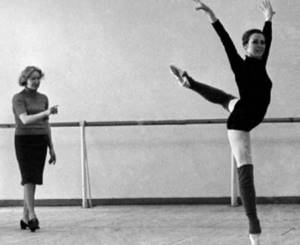
In young age
“The Dying Swan” “in the exiled Chimkent version”
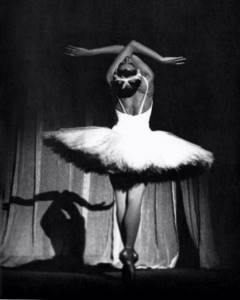
Maya Plisetskaya as Odette in the ballet Swan Lake. Photo: rock-cafe.info
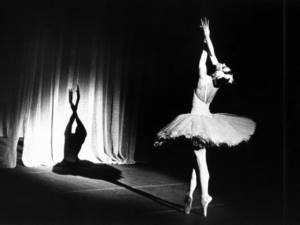
Maya Plisetskaya as Odette in the ballet Swan Lake. Photo: rock-cafe.info
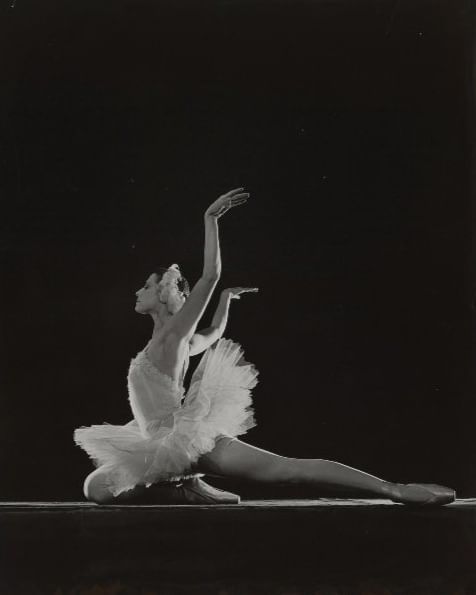
Maya Plisetskaya as Odette in the ballet Swan Lake. 1950s Photo: Evgeny Umnov / Multimedia art museum, Moscow
At the end of 1939, Plisetskaya was allowed to visit her mother, who was deported to the Kazakh city of Chimkent (today Shymkent). To earn a living, Rachel Messerer gave dance lessons to local residents. At one of the musical evenings that were often held in the city, 14-year-old Maya Plisetskaya performed the part of a dying swan for the first time.
My mother insisted that I appear in public. “You get out of shape, you’ll be afraid of the gym. Don't forget, you must become a good dancer. You have talent." Some dejected exile played me a medley of Tchaikovsky’s ballets on the accordion. I improvised, stood on my toes, broke my torso, alternated arabesques. A vague anticipation of the future “The Dying Swan”, but in the exiled Chimkent version, accompanied by an accordion. The success was ruined.
Maya Plisetskaya, “I, Maya Plisetskaya”
In 1941, Maya Plisetskaya danced at the school’s graduation party: junior classes could also participate. The young ballerina performed “Impromptu” by Pyotr Tchaikovsky, staged by Leonid Yakobson. Rachel Messerer, who had been released by that time, was also at the concert.
The next day, June 22, the Great Patriotic War began. The Plisetskys were evacuated to Sverdlovsk (today Yekaterinburg), and the staff of the Bolshoi Theater and teachers of the choreographic school were evacuated to other cities. Plisetskaya could not study and play on stage: there were no teachers for her in Sverdlovsk, and ballets were not staged here. But soon Shulamith Messerer came to the evacuation with the idea of the play “Swan Lake”. In her ballet, Maya Plisetskaya again performed the role of the Dying Swan.
Soloist of the Bolshoi Theater
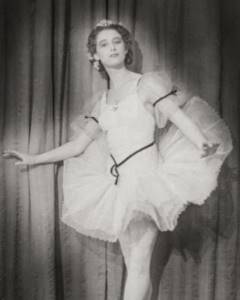
Maya Plisetskaya as Masha in the ballet The Nutcracker. 1944. Moscow. Photo: Alexander Tsarman / pinterest.ru
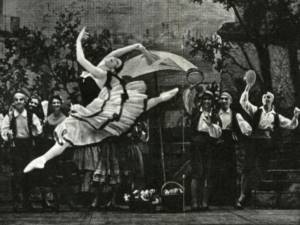
Maya Plisetskaya as Kitri in the ballet Don Quixote. Photo: classicalmusicnews.ru
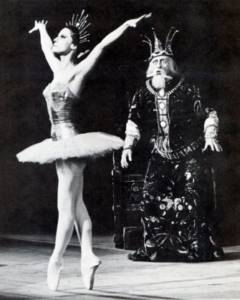
Maya Plisetskaya as the Tsar Maiden in the ballet The Little Hunchbacked Horse. Photo: classicalmusicnews.ru
At the end of 1942, Maya Plisetskaya returned to Moscow. The following year, at the final exam at the school, she performed the role of the Lady of the Dryads from the ballet “Don Quixote” with “excellent marks”. And soon she was accepted into the Bolshoi Theater troupe. At first, the girl was not given leading roles: she was a corps de ballet dancer and received the minimum salary. Success came to Plisetskaya when she played in the ballet Chopiniana.
In two rehearsals, I learned the jumping mazurka in “Chopinian” on the fly and danced it with thunderous success. I deliberately tried to stay in the air for a moment at the peak of each jump, which aroused enthusiasm among the audience. Each jump was accompanied by a crescendo of applause. I myself had no idea that the audience would like this little trick so much. The success was truly great. Some of the balletomanes were already going to see Plisetskaya for the next Chopinianas.
Maya Plisetskaya, “I, Maya Plisetskaya”
Soon the ballerina began to be given solo roles. First, small ones, for example, the parts of fairies in The Sleeping Beauty, and then the main ones - Masha in The Nutcracker, Juliet, the Tsar Maiden in The Little Humpbacked Horse and many others. On December 22, 1949, Plisetskaya performed at a Kremlin concert in honor of Joseph Stalin’s birthday. The following year, she first performed the role of Kitri in Don Quixote, which became one of the most famous in the ballerina's repertoire. This premiere was attended by 13-year-old Rudolf Nureyev. Years later he recalled: “I didn’t cry, I sobbed. I cried with happiness. You started a fire on stage."
Foreign tours and innovative techniques at the Bolshoi Theater
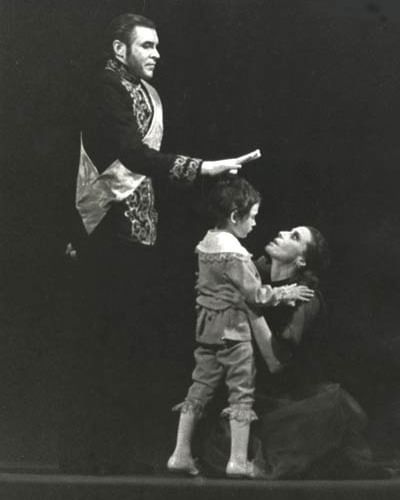
Maya Plisetskaya as Anna in the ballet Anna Karenina. Photo: Georgy Soloviev / bolshoi.ru
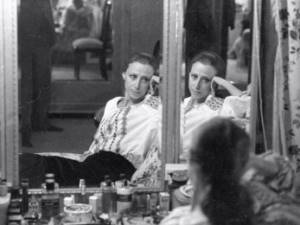
Maya Plisetskaya. 1970s Multimedia Art Museum, Moscow
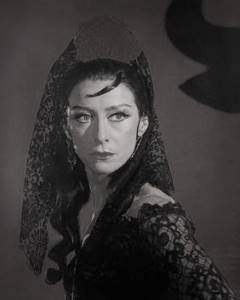
Maya Plisetskaya as Carmen in the ballet Carmen Suite. Photo from the archive of Maya Plisetskaya / bolshoi.ru
For many years, Maya Plisetskaya did not receive a salary increase. She often toured the USSR and abroad. In 1953, together with other artists of the Bolshoi Theater, the artist was sent to India. Plisetskaya communicated with foreigners, including Prime Minister Jawaharlal Nehru, and, as was customary at that time, she was followed by KGB officers. When the ballerina returned to Moscow, she realized that she had become “restricted from traveling”: she was not taken on tour to Switzerland, France, Holland, China and other countries. Maya Plisetskaya wrote to officials, called the Ministry of Foreign Affairs, but never received permission to leave: “My two “pleading” telegrams to Khrushchev, letters to him, Bulganin, Shepilov - remained unanswered... None of the leaders wanted to talk to me. I didn’t hear the words.” Later, Plisetskaya was told that in 1958, the KGB considered her case on charges of counter-revolutionary activities and working for British intelligence.
In 1958, when most of the Bolshoi Theater troupe left for London, Maya Plisetskaya remained in Moscow and decided to stage Swan Lake. In this performance, for the first time she was a choreographer and choreographer at the same time. All tickets for the premiere were sold out: “What happened at the end of the acts and after the final closing of the curtain is impossible to describe. Squall. Storm. The eruption of Vesuvius,” Plisetskaya wrote in her autobiography. Its production was attended by officials - KGB Chairman Ivan Serov came to the premiere, and Nikolai Bulganin, Mikhail Pervukhin, Nikita Khrushchev came to the following performances. The ballerina recalled: “The performance... even moved Khrushchev. Nikita Sergeevich is flushed, smiling, does not leave the box, and sends greetings to the stage.”
Plisetskaya was not released from the USSR until April 1959. Then Khrushchev allowed her to join the Bolshoi Theater troupe and go on tour to the USA. The Americans greeted the famous ballerina with delight. Journalist John Martin's review in The New York Times ended like this: “Thank you, Nikita Sergeevich!”
In April 1967, Cuban choreographer Alberto Alonso staged the ballet Carmen Suite to the music of Rodion Shchedrin at the Bolshoi Theater. Maya Plisetskaya's parts were based on innovative techniques, and the audience, which was accustomed to the traditional, lush choreography of this performance, greeted it coolly.
At the premiere, we tried so hard! They crawled out of their skin. But the Bolshoi hall was colder than usual. Not only Minister Furtseva and her minions, but also the Moscow public, who were kind to me, were waiting for the second “Don Quixote,” cute variations on a theme familiar to them. Mindless fun. But here everything is serious, new, strange. They applauded more out of politeness, out of respect, out of love for the previous one. Where are the pirouettes? Where is shene? Where is the fouetté? Where are the circle tours? Where is the beautiful tutu of the mischievous Kitri? I felt like the hall, like a sinking flagship, was plunging into bewilderment..."
Maya Plisetskaya, “I, Maya Plisetskaya”
In the 1970s, Plisetskaya again staged a play at the Bolshoi Theater, now it was “Anna Karenina” to the music of Rodion Shchedrin. And in 1980, the premiere of “The Seagull” based on the play by Anton Chekhov took place here.
In the 1980s, the ballerina traveled a lot and went on tour around the world - she visited France, Spain and other countries. In 1983, the director of the Rome Opera and Ballet Theater invited Plisetskaya to take the post of artistic director. There, the ballerina and her own theater troupe staged the ballets “Raymonda” and “The Nutcracker.” For her performances at the Rome Opera, Maya Plisetskaya received the Italian Via Condotti Award for the Arts. In the late 1980s, the artist collaborated with the Royal Theater of Madrid and directed the troupe of the National Ballet of Spain. Despite this, Plisetskaya said that she never considered the work of a choreographer to be her calling.
I never wanted to be a choreographer. This passion did not burn me with torment. By nature, I am more of a performer. Although there was always an abundance of fantasies and ideas. My small choreographic tests were born due to the force of circumstances.
Maya Plisetskaya, “I, Maya Plisetskaya”
Personal life and joint work with Rodion Shchedrin
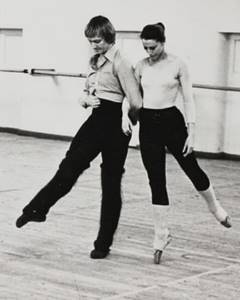
Maya Plisetskaya and Maris Liepa at a rehearsal. 1970s Moscow. Photo: lenta.ru
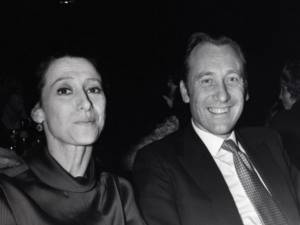
Maya Plisetskaya and Rodion Shchedrin. 1974. Moscow. Photo: Boris Kosarev / family archive of Maria Kosareva / russiainphoto.ru
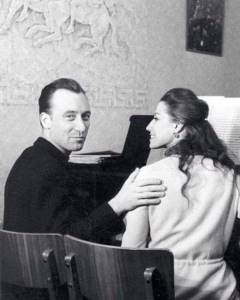
Maya Plisetskaya and Rodion Shchedrin. 1963. Moscow. Photo: multiurok.ru
Maya Plisetskaya married twice. The first time was for the Latvian ballet dancer Maris Liepa, who was 11 years younger than her. And in the second - for the composer Rodion Shchedrin. They met back in 1955 at an evening with Lily Brik, but began to communicate closely only three years later, when Shchedrin attended the premiere of the ballet “Spartacus” at the Bolshoi Theater. After the performance, the composer came to Plisetskaya’s rehearsals several times and soon invited her to take a walk around Moscow. The ballerina later recalled: “I agreed without hesitation. It all ended with the fact that when I write these lines, we have not parted for thirty-four years.”
This was the time when Plisetskaya was considered “not allowed to travel abroad.” She later wrote that meeting Rodion Shchedrin and his support helped her get through this difficult period in her life. In October 1958 they got married.
A dizzying novel that came to me from the sky distracted me from the failed trip to France and Belgium. The trip took place, the troupe went well. I stayed home. I'm no stranger to this. But this blow was not so painful. When there is a person nearby who shares your grief and joy in half, life becomes more smiling, brighter, and hope dawns. We'll find a way out of the catacombs, together, we'll definitely find it!..
Maya Plisetskaya, “I, Maya Plisetskaya”
Shchedrin dedicated many of his works to his wife: “The music for the ballet The Little Humpbacked Horse is my early, very early work. But the work is milestone, important for my creative self-affirmation, and has determined a lot in my life. The work in which I “caught” into my musical hands the unearthly firebird - Maya Plisetskaya. This score is dedicated to her.” Together the couple worked on the ballets Anna Karenina, The Seagull, Lady with a Dog, and Carmen Suite.
Maya Plisetskaya passed away on May 2, 2015 - she was 89 years old. Millions of people admired her beauty, talent and grace. We invite you to remember the most interesting facts from the life of the legendary ballerina, as well as look at rare photographs of her. Maya Plisetskaya admitted that ballet “was not the passion of her life.” She wanted to become an actress, like her mother, silent film actress Rachel Messerer. After Plisetskaya’s father was shot and her mother was sent to a camp for the wives of traitors to the motherland, 13-year-old Maya was adopted by her maternal aunt, Bolshoi Theater soloist, ballerina Shulamith Messerer, from whom she inherited her profession.
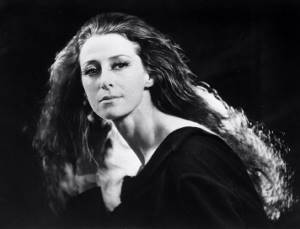
“People are not divided into classes, races, or government systems. People are divided into good and bad. The only way. The good ones are always the exception, a gift from Heaven.”
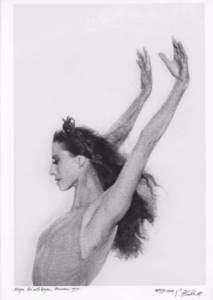
“What does a person really need? I don't know about others. I’ll tell you about myself. I don't want to be a slave. I don’t want people unknown to me to decide my fate. I don't want a collar on my neck. I don’t want a cage, even a platinum one.”
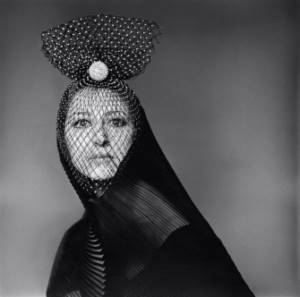
“Men have always liked beautiful figures. I don’t think the ballerinas won them over with their intelligence.”
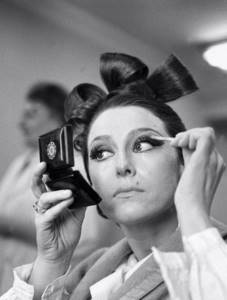
I don't like fuss. Neither on stage nor in life... Extra words are also not needed.”

Maya Plisetskaya admitted that “she spied her “Dying Swan” at the Moscow Zoo”: “I went there several times with the sole purpose of spying on the swan’s plasticity, the shape of the movement of the wings, the position of the head on the bend of the neck. I was lucky once. Suddenly, a black swan a few meters away from me spread its wings to its full width, raised its webbed foot and stood on the other in a classic arabesque. He stood there for an incredibly long time. I remember I was amazed - this is stability...”
In art, it doesn't matter what. The most important thing is how. It needs to reach everyone, to touch the soul - then it’s real, there’s no other way.”
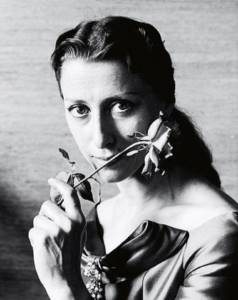
For more than half a century, Maya Plisetskaya lived in marriage with composer Rodion Shchedrin. They were introduced by Lilia Brik, the muse and lover of the poet Vladimir Mayakovsky, who, according to Plisetskaya, loved to bring people together: “Once she asked me to sing a part from The Golden Cockerel on a tape recorder - and then she let Rodion listen to the recording. He developed an interest in me...” Later, Shchedrin got ready to write music for a ballet with the participation of Plisetskaya and came to her rehearsal. The ballerina recalled that she met him in a tight black elastic leotard, which emphasized all her advantages, which completely conquered the composer. “Old Freud won,” the ballerina aptly noted. The composer invited her to ride around Moscow that same evening.

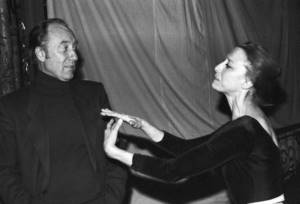
Maya Plisetskaya and Rodion Shchedrin had no children. The ballerina did not hide the fact that she chose a career over the joys of motherhood: “All the signs appeared that she was pregnant. Give birth? And part with ballet? Dancing or babysitting - I chose the first. Shchedrin was not enthusiastic, but agreed.” Plisetskaya did not regret her decision, because “there are many children with families, but Maya Plisetskaya is alone.”
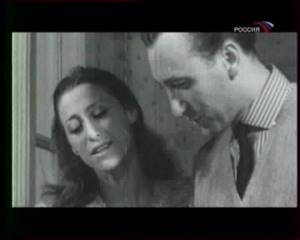
Rodion Shchedrin always accompanied Maya Plisetskaya during her tours. The ballerina kept her lipstick in her husband’s jacket pocket, since she herself was losing everything, and her husband was always nearby. Shchedrin dedicated many ballets to his wife, including Anna Karenina, The Seagull and The Lady with the Dog. Plisetskaya herself, who left the stage at 65 (!) years old, said that her husband extended her stage career by 25 years.
For many years she had a friendship with the famous French couturier Pierre Cardin, for whom she and her husband, composer Rodion Shchedrin, dressed. It all started with her Carmen. For the first time, Cardin saw Plisetskaya in this image. She struck his imagination so much that he was inspired until the end of his days by her as a deity. Cardin made costumes especially for Plisetskaya for ballets to the music of Shchedrin “Anna Karenina”, “The Seagull”, “The Lady with the Dog”. When the great couturier came to Moscow, Maya also took part in the evening in his honor. She walked the catwalk in Paris when he presented his collection.

“She had impeccable taste,” the master noted. “She had a great eye for fashion and was extremely elegant.” The director of haute couture at the House of Pierre Cardin, Maryse Gaspard, noted that she and her colleagues will forever remember the ease and simplicity with which one of the most famous ballet stars in the world behaved. “Maya always had a kind word for each of our employees,” she noted. “We all carefully preserve the Russian souvenirs she gave us.”
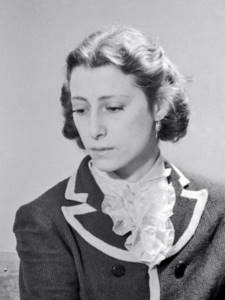
Yves Saint Laurent admired Maya Plisetskaya and was inspired by the fact that she challenged the entire conservative society of that time. The couturier created a soft pink chiffon chiton - incredibly feminine and at the same time revealing, just like Maya herself. He was always attracted to Russian culture and looked for its reflection in people.
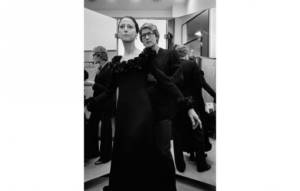
“Don't eat! A more effective way to stay in shape has not yet been invented.”
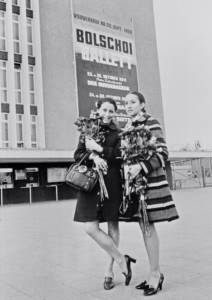
“...I’m not used to working with frenzy. Roland Petit gets angry: “Are you so lazy with me, or always?” “The main thing for me is to remember the text, then I’ll add more.” “It’s a strange Russian school,” Roland sums up. - What's strange about that? I want to dance until I'm a hundred years old. - What if you’re not lazy? “You won’t last more than forty...”
“Why did the French like me? Did they like it? I directly asked this question to ten of the most super-French - Louis Aragon, Roland Petit, Jean Vilar, Yvette Chauvire, Jean Babile... Everyone agreed on one thing: I managed to switch the audience’s attention from abstract technique to the soul and plasticity. When I danced the finale of the second act, my eyes were drawn to the pattern of swan hands, the bend of the neck; no one noticed that my pas de bourrées were not so perfect. Quite a few Grand Opera ballerinas could perform the pas de bourrée more accurately, with better extension of the lifts, more turned out. How about singing Tchaikovsky’s theme with your hands and the outline of your neck?...”
“I’ll give you some advice, future generations. Listen to me. Don’t humble yourself, don’t humble yourself to the very edge. Even then - fight, shoot back, blow the trumpets, beat the drums... Fight until the last moment... My victories rested on that alone. Character is destiny.”
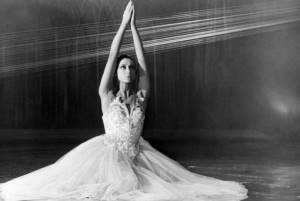
“Years of Wanderings” after the Bolshoi Theater
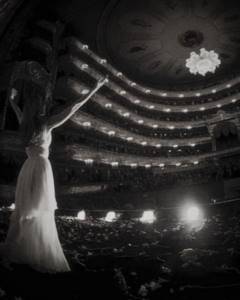
Maya Plisetskaya. Photo from the archive of Maya Plisetskaya / bolshoi.ru
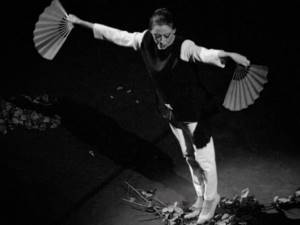
Maya Plisetskaya performs the composition “Ave Maya”. Photo: Vladimir Vyatkin / classicalmusicnews.ru
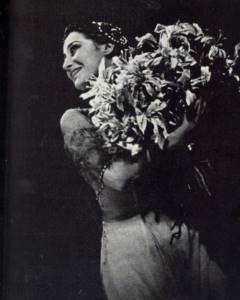
Maya Plisetskaya. Photo: izbrannoe.com
In the late 1980s, Maya Plisetskaya's relationship with the Bolshoi management worsened. She left the theater, but did not interrupt her career. Plisetskaya has traveled almost all over the world with concerts, visiting Argentina, the USA, Japan, Poland, and France. In her book of memoirs, Plisetskaya called this period of her life years of wandering. After the collapse of the USSR, she left the country and in 1994 received Lithuanian citizenship, although she lived almost all the time in Munich.
People know me less in Germany than in France, America, and Spain. Less than in Japan and Argentina. And certainly less than in Russia. However, so far few people know that I am in Germany, in Munich. Maybe I'll need some more. Only balletomanes ask for autographs. Life is easier. But it’s unusual.
Maya Plisetskaya, “I, Maya Plisetskaya”
Plisetskaya often visited Russia. In 1994, she published the book “I, Maya Plisetskaya,” in which she talked about her life. In the same year, the artist headed the jury of the international ballet competition "Maya", which was held in St. Petersburg until 1998.
The ballerina did not leave the stage even in her later years. She performed old numbers and played in new productions. In 1995, on her 70th birthday, Plisetskaya performed the number “Ave Maya,” which was created especially for her by the French choreographer Maurice Bejart. The artist visited Japan many times: “This is also my country. The Japanese audience likes me." In 2000, the premiere of the play “Wings of a Kimono” took place in Tokyo, in which the ballerina performed the role of the Heavenly Fairy, and in 2003 she choreographed a dance here for the musical “Aida” based on the opera by Italian composer Giuseppe Verdi.
In the last years of her life, Plisetskaya did not dance; she taught master classes and wrote memoirs. In November 2015, a gala concert was planned to be held at the Bolshoi Theater in honor of the ballerina’s 90th birthday. Maya Plisetskaya did not live to see her anniversary - she died on May 2, 2015. In her will, she wrote that after her husband’s death their ashes would be united and scattered over Russia.
Maya Plisetskaya. Biography
In 1987-1990, Plisetskaya worked mainly in Spain, heading the Madrid ballet troupe Teatro Lirico Nacional, for which she revived the ballet “A Vain Precaution” by Peter Hertel (choreographer - Alexander Gorsky) and introduced “Carmen Suite” to the repertoire. Plisetskaya began to work closely with the opera singer Montserrat Caballe, on whose initiative she took part in the production of Giacomo Puccini’s opera-ballet “Willis,” shown at the arts festival in Perelada (Catalonia). Caballe sang “The Dying Swan”, and Plisetskaya - for the first time with a recording of a human voice - performed this dance miniature. In 1988, Plisetskaya performed in the title role of the ballet “Mary Stuart” staged especially for her by the artistic director of the flamenco troupe, Jose Granero, by Emilio de Diego. Plisetskaya danced her last performance at the Bolshoi Theater, “Lady with a Dog,” on January 4, 1990. Disagreements with the theater management, including the chief choreographer and artistic director of the ballet Yuri Grigorovich, led to her leaving the Bolshoi Theater.
In the 1990s, Plisetskaya continued her collaboration with outstanding choreographers of the world, in particular with Roland Petit's Marseille Ballet and Maurice Béjart's Ballet of the 20th Century. In 1992, the premiere of the ballet “The Madwoman of Chaillot” to the music of Shchedrin took place at the Espace Pierre Cardin Theater, where Plisetskaya performed the main role.
In August 1994, in St. Petersburg, on the stage of the Alexandrinsky Theater, the First International Ballet Competition “Maya” took place, where Maya Plisetskaya was the chairman of the jury and herself formed its composition.
In 1995, Plisetskaya was elected honorary president of the Imperial Russian Ballet troupe, created on her initiative.
On November 29, 1995, Maya Plisetskaya’s anniversary concert took place on the stage of the Bolshoi Theater in Moscow, during which the great ballerina demonstrated amazing creative longevity.
Plisetskaya acted a lot in films and on television. She can be seen in the concert film “Masters of Russian Ballet” (1953), ballet films “Swan Lake” (1957), “The Tale of the Little Humpbacked Horse” (1961), “Anna Karenina” (1975), and in the opera film "Khovanshchina" (1959), in film and television adaptations of "Carmen" (1969, 1978), as well as television adaptations of the ballets "Bolero" and "Isadora" ("Poetry of Dance", 1977), "The Seagull" (1982), "Dame with a dog" (1986). She also starred as a dramatic actress: “Anna Karenina” by Alexander Zarkhi (1968, the role of Princess Betsy Tverskaya), “Tchaikovsky” by Igor Talankin (1970, the role of the singer Desiree), the television film “Fantasy” by Anatoly Efros based on the story by Ivan Turgenev, “Spring Waters” (1976, the role of Polozova), “Zodiac” by Jonas Vaitkus (1985, the role of the muse of the artist Mikalojus Čiurlionis).
Numerous documentary films and television films have been made about Plisetskaya, including “Maya Plisetskaya” by Vasily Katanyan (1964, new edition 1981), “Maya Plisetskaya. Familiar and Unfamiliar" by Boris Galanter (1987), "Maya" by Motoko Sakaguchi (2000, for Japanese television), "Maya Plisetskaya" by Dominique Deluch (2000, for French television), "Maya Plisetskaya assoluta" by Elisabeth Kapnist (2002, for French television ).
The book “Maya Plisetskaya” by Natalia Roslavleva and numerous photo albums with the same name are dedicated to Plisetskaya’s work. In 1994, the Moscow publishing house “Novosti” published the ballerina’s book “I, Maya Plisetskaya...”, which went through several editions in Russia and was translated into 11 languages.
In 2005, Plisetskaya presented readers with her album of photographs, “Ave, Maya,” which captured the best moments of the life and work of the outstanding ballerina, and in 2007, her autobiographical book, “Thirteen Years Later.”
In 2010, Plisetskaya’s new book, “Reading Your Life,” was published.
Maya Plisetskaya has many awards from various countries. She was awarded the titles of People's Artist of the USSR (1959), Hero of Socialist Labor (1985). She is a holder of three Orders of Lenin (1967, 1976, 1985), the Order of Merit for the Fatherland III (1995), II (2000), I (2005) and IV degrees (2010), the French Order of Merit in Literature and art" (1984, Commander) and the Legion of Honor (1986).
In July 1991, King Juan Carlos of Spain awarded Maya Plisetskaya the highest order of Spain, the Order of Isabella the Catholic, and granted her the title of nobility. In Spain she was awarded the Gold Medal of Arts (1991) and the Prince of Asturias Award (2005).
The Russian ballerina was also awarded the title of “Honorary Citizen of Spain.” Among the ballerina’s numerous awards are the International Prize, awarded annually by the Mayor of Paris to the most elegant woman of the year - “Excellent-1986”, the “National Pride of Russia” Award (2003), the Grand Cross of the Commander of the Order of Merit for Lithuania (2003), the Medal of Merit in front of Vilnius - a medal named after Princess Barbora Radvilaite (2005) and others.
In 2006, Maya Plisetskaya was awarded the Japanese Imperial Court Prize for her outstanding contribution to the development of ballet art.
Plisetskaya is a doctor of the Sorbonne (1985) and an honorary professor at Moscow State University (1993).
In 1994, the Institute of Theoretical Astronomy assigned the name Plisetskaya to minor planet No. 4626.
Plisetskaya has been married to composer Rodion Shchedrin since 1958. In 1991, Plisetskaya and Shchedrin moved to Germany, to Munich. Now the couple lives in three houses - mostly in Munich, Moscow and at their dacha in Lithuania.
On May 2, 2015, the legendary ballerina, choreographer, writer and actress Maya Mikhailovna Plisetskaya died in Germany.
The material was prepared based on information from RIA Novosti and open sources
